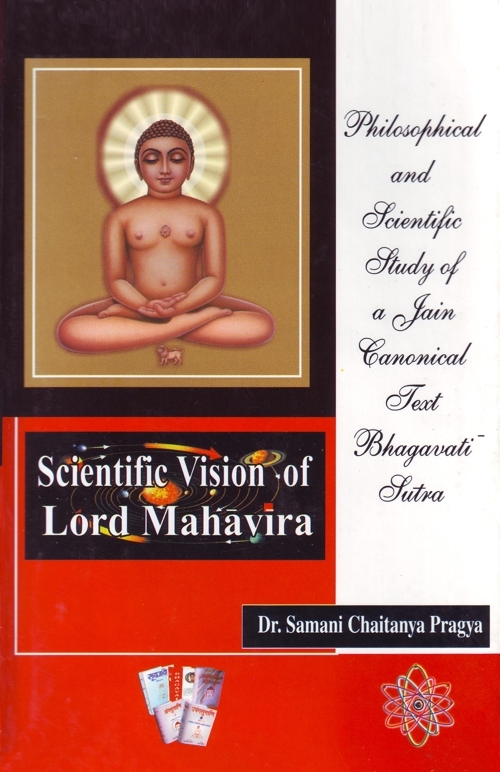Instinct is a widely discussed topic in Jain psychology. The Nandī [69] cannon mentions three kinds of instincts i.e. saṁjñās, viz 1. kālikopadeśikī, 2. hetupadeśikī, 3. dṛṣṭivādopadeśikī. These three are of cognitive nature. According to the Jains, every living being has some natural instincts, or drives or desires which have been called 'saṁjñās' being physiological or psychical. Instinct is the natural manifestation of a being, which is used by the stimulus from the outside world of sensation, according to the condition of soul. It involves the process of an inter-linked chain of actions in the direction of some definite and distant object, which is conducive to selfpreservation, etc.
There are various meanings of the word 'saṁjñā', such as, knowledge, desires, thinking capacity to differ between good or bad. According to the theory of karma, samjnas are due to pre-maturation and subsidence-cum-destruction of deluding karma and feeling producing karma and also due to many types of inherent sensitivity in the living beings. Hence, there may be a variety of their numbers.
In the Bh.S,[70] ten instincts have been enumerated. They are—the instinct of hunger, fear, carnality, possession, anger, pride, deceit and greed, instinct as discursive cognitional activity and instinct as intuitive activity. The detailed description about them is not found in the Bh.S. The commentary on Sthānāṅga Sūtra [71] throws light on the nature of the instincts. According to it, they are not only cognitive in nature but are mainly of emotive nature. According to modern psychology they can be known as of affective nature. The commentary defines saṁjñā as consciousness (both emotive and cognitive) due to the rise of the sensation - producing karma and deluding karma, and the suppression-cum-elimination of the knowledge-covering and intuition-covering karma. Of the ten instincts, the first eight are emotional, and the remaining two cognitive. The commentator has explained the practical aspects of instincts, which can be compared with the behavioral psychology as shown in the following table.
| Table: 7 | |
|---|---|
| Instinct | Physical, Mental and Behavioural Changes |
| 01. Āhāra saṁjñā | Picking up the morsel of food by hand, mouth, etc; movement of the mouth, search for the food. |
| 02. Bhaya saṁjñā | Emotion of fear creating timid out-look, change in voice, horrification, etc. |
| 03. Methuna saṁjñā | Amorous glances, touch, shivering, etc. |
| 04. Parigraha saṁjñā | Avaricious acquisition of things and their hoarding. |
| 05. Krodha | Redness of the eyes, snapping of teeth and trembling of lips, etc. |
| 06. Māna | Egotism and hardening of the body. |
| 07. Māyā | False speech out of affliction, act of hiding etc. |
| 08. Lobha | Acquisition and hoarding out of greed. |
| 09. Loka | Discursive cognitive activity. |
| 10. Ogha | Intuitive cognition. |
Of the ten instincts, Ogha and Loka these two are discussed extensively by the commentator, Śilāṅka and Siddhasenagani. According to former Ogha means commonplace activity and Loka means specific activity. The first represents the intuitive cognition and the second one demonstrates active knowledge. Siddhasenagani explains Ogha saṁjñā as cognition without the sense organs and mind. Such cognitive activity is available even in plants. The plants intuit the distant and future events by means of vibration in the atmosphere. The instinct due to popular tradition and inheritance is called Loka saṁjñā. The commentary observes that these instincts are clearly describable in five-sensed beings. In the one-sensed being, they are simply due to rise of karma.[72] Modern scientists have studied these instincts in plants with the help of instruments, so it is now possible to find them in one-sensed beings. This experiential consciousness is found in all living beings while "knowledge" is found in the higher living ones. Hence, the 'saṁjñā', here, should be taken as natural or innate instincts found in all living beings.
It appears that originally there were only, at first, four instincts and six more were added later to the list of the original four with the subsequent development of psychology. This fact is also proved by the Sthānāṅga Sūtra;[73] etc. and the Digambara scriptures like Dhavalā [74] etc. The commentator Śilanka adds six more instincts including the ten above, viz; pleasure, pain, disgust, sorrow, delusion and religion.[75] If five cognitional instincts, according to Niryukti, are added the total number of instincts will be twenty-one. Thus, there are sixteen experiential and five cognitive instincts. As far as Acharya Mahapragya's opinion is considered, the last two instincts, represent knowledge and conation and not the conventional meanings.[76] Ratnakara has referred to these instincts in a different way and classified them into three types—(i) long-timed and memorical (uterine born ones), (ii) logistic (2-4 sensed beings) and (iii) poly-viewing (right faith ones).[77] They seem to be related to the living beings with developed mind. The view of Dr. N.L.Jain[78] regarding the possession of the instincts by different categories of beings, requires critical examination. Moreover, with reference to traditional instincts, there seems to be some ambiguity in two cases—(a) libido and sex and (b) greed and belongings.
The classification of instincts into ten categories agrees with that of the modern psychology as advocated by the psychologists like McDougall.[79] Accordingly, there are fourteen kinds of instincts, including laughter etc. which belong to human beings, viz; [1] parental or protective, [2] aggression combat, [3] curiosity, [4] food-seeking, [5] instinct of repulsion (avoidance or disgust), [6] escape, [7] gregarious, [8] instinct of self-assertion, [9] submission, [10] mating, [11] acquisitive, [12] constructive, [13] appeal and [14] laughter.
Till now, we have discussed some specific characteristics, which are nothing but the different phases of the basic quality of sensitivity, irritability or consciousness. Out of the four characteristics mentioned above the instincts are merely an extension of the quality consciousness. The concepts of bio-energy and bio-potentials are, however, some suggestions of the material approach for the living entity. Thus consciousness is a specific quality and the rest of the properties are suggestive of material nature of the living being.
 Dr. Samani Chaitanya Pragya
Dr. Samani Chaitanya Pragya

